The Entrepreneurial Accountant: The journey to going solo
How to find the right clients for your business
16 March, 2023
Two guests with experience of running accountancy practices, Mark Telford and James Ashford, share some top tips on finding clients.
How do you find the right clients for your practice? Two very special guests, who both have bags of experience in what it takes to run a thriving accountancy practice, share the approaches they take when running their businesses.
Mark Telford is a chartered accountant and coach for accountants. And we have James Ashford, VP of GoProposal, author of Selling To Serve and Untapped.
Check out what they have to say about finding clients, charging the right amount, adding value and much more.
Here’s what they cover:
- From early beginnings to current successes
- Want to set up your own practice? Plan, plan, plan
- Creating price points and adding value to clients
- The art of saying no
- Getting the numbers right
From early beginnings to current successes
Mike Psaras
Welcome, guys, to the show. How are you?
Mark Telford
Hi, Mike. Yeah, good, thanks.
James Ashford
Yeah, great. Thank you, Mike. Thanks for having us.
Mike Psaras
Thank you so much for being here. I’m excited. So just to kick things off, perhaps with Mark, I’d love for you to tell us a little bit about your background, your business, and how you got to where you are today.
Mark Telford
Yeah, sure, Mike. Well… at university, last year of university, didn’t have a clue what to do. All my mates were going off getting jobs.
I thought I’d better do something about it, popped into the career centre, did a questionnaire, and they said I should be an accountant.
Not bad for somebody studying history with a grade C in O-Level Maths, but there we go.
From there, I went into practice. A very, very dark, dingy practice I didn’t enjoy that at all. I left as soon as I could, went to work in industry.
Roll forward 14 years, and I did what I swore I’d never do it again, and not only would I work in practice, but I started my own.
So I’ve been running the practice in its current form since 2012. And, yeah, just grown and evolved since then.
Mike Psaras
Nice. So happy 10-year anniversary, I guess.
Mark Telford
Yeah.
Mike Psaras
Congratulations for making it this far. And James? Well, I think a lot of people know kind of your story. But you’ve done lots of different jobs in the past, haven’t you?
James Ashford
I’ve done lots of different jobs. I taught art in prisons, I was a close-up magician, like I’ve done loads of different things.
And I’ve also set up many businesses, and not many of them were successful, and kinda had one business that dramatically failed, dramatically the impact it had on me and my family, et cetera, having… once it kinda folded.
And when I reflected on it, there were various things I’d got wrong, but the major thing was not investing enough into the finance function of that business.
And I was acting on kinda 18-month-old data, making gut feelings, and having no understanding of how that impacted cash or cash flow, you know.
And then after that just really dived into what businesses are all about, studied them, worked with some fantastic people around the world, and then started working with other businesses to help them to avoid the mistakes that I’d made.
And every time I’ve worked with these businesses, nearly always, one of the main failings was how they sold their services. Like if they just fix that part, then it solves so many of the other issues in the business because it enabled them to make more money.
I did it for many businesses in many industries, and then eventually met an accountant in Manchester. And that was when I implemented a system there, as I had been in many other businesses up until that point.
But then this time, another accountant heard about it. And that was the start of GoProposal.
I then became a director of that accounting firm as well. We then scaled up GoProposal. I wrote a couple of books around the subject as well.
And now we work with thousands of accountants around the world to help them to build scalable, profitable accounting businesses.
Mike Psaras
Nice. It definitely serves a purpose for, I think, a lot of people and solves a problem. Mark, do you use it by any chance?
Mark Telford
I do, yes.
Mike Psaras
Tell us a bit about your experience of it.
Mark Telford
Well, I mean, it’s interesting, because the way I approach this is a lot different from a lot of accountants.
I wasn’t, you know, sort of saddled with a load of the baggage that a lot of accountants have when it comes to pricing. I was coming from industry, because when I trained in practice, I had nothing to do with pricing. Nothing at all.
So I had none of the baggage, none of this, you know, billing by hour, or this concept of WIP or anything like that.
I started my practice, I didn’t have a big lump of cash. I needed the cash to start coming in instantly.
It was all framed around I’ve worked in industry, we wanted to be doing more for business owners than the traditional accountant. I’d seen it go wrong, I wanted to do it right. And the way we’re approaching it is this is an all-round– all-year-round service. It’s not just the year-end. We’re going to be in contact with you regularly. So you need to pay us regularly.
And in terms of fees, we never struggled with low fees, because I’ve been on a very high salary when I’ve been employed, and my initial starting point was I need the cash to be coming in. I need to be doing work at a value that supports me, but also I need to be doing work at a level, which is supporting that business owner more than just this historic stuff.
So our pricing was always on the higher side.
But I think the great thing for us with GoProposal, if it’s enabled consistency, transparency, and then those little gaps where there was things we were doing we weren’t charging for.
And a really good one that’s quite recent would be workplace pensions and auto-enrolment. There’s thousands of accountants out there doing it, and they’re not charging for it.
Want to set up your own practice? Plan, plan, plan
Mike Psaras
Hand up over here. Certainly so much is kinda left on the table and GoProposal really addresses that and helps with that, which is amazing.
So to any, kind of… the audience, who are checking it out, definitely go and have a look, explore, see if it’s something that can help you.
What steps would you advise accountants in practice currently who are looking to set up their own businesses? What would you sort of give them as a tip on things that they should be looking out for?
Mark Telford
Okay, so only accountants in practice?
Mike Psaras
Yeah, accountants in practice, or maybe if they’re in industry and they want to flip into practice as well? I know that happens a lot.
Mark Telford
Yeah, I think the main one is you’ve got to plan.
You can’t do what I did, which was, I was doing a contract role, I had a bit of a lightbulb moment, because between leaving industry and starting my accountancy practice, I’ve done consultancy work.
And this is where I knew the benefit that a finance professional could bring to a small business owner. But they weren’t prepared to– but a lot of them were prepared to pay what I wanted in terms of the day rate.
So it was how could I break that down into a more manageable service and fee. And I think that’s what a lot of accountants need to do.
They might be in the role now and think, oh, I can do this better. Or I can do it differently.
But they’ve really got to plan.
They’ve got to plan what they’re going to do, and how they’re going to do it, because the big thing I found was, I was talking to these small business owners and I’ve got so many ways I could help them, but they couldn’t see what I was positioning and offering, and how it could help them.
So it’s all about planning what your target market is, and then plan what the value is that you’re going to be able to deliver to that business owner.
But in such a way that they can see it, they can visualise it.
Creating price points and adding value to clients
Mike Psaras
Yeah, absolutely. That kinda reminds me of something. And a problem, really, that I’ve been trying to get my head around.
I think James mentioned it as well, is that accounts are so intangible, the biggest and most important thing is trying to communicate the value that you’re bringing in, and somehow trying to make it more tangible so that the client can really understand it.
So to you, James, what would you sort of suggest? And how would you sort of go about doing that?
James Ashford
Yeah, so I’m just gonna pick up on the title of this podcast, which is The Entrepreneurial Accountant – I love that, by the way – because to my mind, the ones where, the accounting businesses that I see working the best are the ones who are businesses, they are business owners, and their business happens to provide accounting services, rather than setting up a traditional accounting firm or accounting practice.
And it’s a very subtle, but important step to make that because in doing so, it aligns you with your clients, versus aligning yourself with other accountants, which you don’t necessarily need to do.
And in starting out a practice, I’m gonna say this, you think I’m gonna say this because of GoProposal, but it’s not – you’ve got to make sure you’re charging right in the first place.
The biggest mistake I see small firms making is to think they’re small, they think they’re not qualified, they’re only in a small town or whatever. Therefore, they can’t charge high fees.
They go in at low fees, because what they’re trapped in is employee mentality.
So let’s say they were working for someone before, and they were getting paid this rate. They’ve now set up their own practice, and they’re getting paid this rate, which seems better than what they were getting paid before.
However, it’s not a sustainable amount of money to allow them to scale a profitable practice. And the moment they start employing their first members of staff, it’ll all start to crumble.
So back to Mark’s point about planning, it’s really important. I would suggest get your organisational chart, where do you want to be in three, five years’ time?
What does that look like?
And are you creating a price point that will sustain you having those members of staff in a few years?
Otherwise, you haven’t got a business at all, you’ve got a job, and it’s the crappiest job in the world, because you can’t go ill, you can’t go on holiday. You can’t do any of those things if you can’t build this enterprise that runs without you.
But back to your point about how do you make it tangible, because accounting services are intangible, and this is why the proposal is so important, because the proposal gives it physicality.
You can’t just be working for a firm then agree, uh yeah, we’ll do this for you, we’ll do that for you, and not make it concrete in the proposals.
They can look at it, read through it, see what it’s all about, because that’s where we start to give it value.
Mike Psaras
Absolutely. I totally agree.
And in that same sense of planning and organisational structure, in that phase, would you guys also think about having an idea of who your clients are going to be? Or would you just go out there and just see what comes or like…?
Because for me, I think there’s certain value to creating a kind of avatar of what you want your client to be like.
What industry do they work in? What kinda support do they need? What’s your sort of, like, USP that you can bring to them to add value?
Mark, did you go through that in any sense, in any way?
Mark Telford
Our focus has always been what you might call advisory-led services now.
But that was always started – but we didn’t see it like that. It was more a case of, you know, we want to support and advise you all the way through the year. Whatever those services look like, that’s what we’d be delivering.
But yeah, we definitely package them up. And there is some validity in having an idea of who you want to work with, but a lot of people won’t know that, a lot of people will be just looking to take anything on because they need to get the money coming in.
And there’s too heavier focus on that, which is why it is important to plan for this.
I mean, if I had my time again, there’s so many different things I would do, but… you do need clarity on what those… what your idea of the ideal client is, or the types of business you want to work with.
Now, I’m not going to talk about niching because I think early on, you can think, well, I don’t really know, I’ve got a few ideas about who I want to work with, and in a way, through your experience, you identify, well, actually, I’m working with those clients, they’re great, I want to work with more of them.
I don’t so much like working with those, so I’m going to try and move away from those.
So if I look at when I started, I really banged the drum to my network that I had before I started my business.
Because I worked mostly in property and construction, I had lots of property and construction people coming to me. A lot of those were one-man band subcontractors, none of whom we work with anymore. So that in a way will tell you a story.
Right now, our ideal client is somebody who’s probably turning up with half a million pounds, they’ve got a really clear focus on wanting to move their business forward.
And they’re going to be quite comfortable payers in excess of £10,000 a year.
And they really recognise the value that… I won’t say old. Let’s say a seasoned finance professional can help them within their business.
But that wasn’t on day one. That’s just evolved over the life of the business, the work that I’ve enjoyed, the businesses we can bring the most value to. And also businesses in the way we can attract as well.
The art of saying no
Mike Psaras
For sure. But I mean, in that same sense then, that means that there must… there’s obviously over the past 10 years been a lot of turnover in clients, like which ones you’ve gotten, and eventually ended up with a portfolio that suits your needs.
James, you might have some experience in this as well. So has it been difficult to say no to clients when they come through the door?
You know, you have such a large portfolio, they’re recommending people, you might be on the phone, and they’re not quite the kind of client that you want, or that you can serve best.
Have you got better at saying no over the years? And if so, how? How’d you go about that?
Mark Telford
There’s loads of different ways. One is you can put your prices on your website. That will discourage a lot of people. Another is the process that you have, you might want to call it discovery or onboarding, or whatever it is, that initial meeting, that really sets the rules of engagement in a way.
A big part we have in that is we send pre-workouts to all prospects for a meeting. If they don’t complete it, no meeting. So that’s it, they’re gone at that point. We will discuss pricing in that meeting. If they don’t like the pricing, well, you know, there’s a good chance we’re not going to be working together.
We don’t do loads of advertising, so most of our new business comes from referral and recommendation.
And they’re normally referred from what I’d consider our ideal type of client. So they’ve already got a good idea of what they can expect.
I’ll give you a perfect example of one.
We took on a client last year, he’d actually tried to get in touch with me a couple of times on social media, and I thought he’s trying to sell me something. So we eventually spoke, he’s come on board.
He was paying his old accountant £975 a year, for his VAT returns, his payroll, Self Assessment, his annual accounts.
He’s now paying us over £25,000 a year.
And we’ve already generated tax savings for that client in excess of half a million pounds. So we’ve had a massive impact on this client. We’re now working on a strategic exit for him as well.
He’s introduced us to two other businesses, who are almost identical to his business, just an earlier stage.
So they know exactly what to expect. They know the journey they want to go on. And for that type of client, it’s just a joy to work with them.
Mike Psaras
Yeah. Amazing.
Mark Telford
Just one point on that as well.
At no point has there ever been a hard sell going from £975 to £25,000. It was a case of this client came to us and said, yeah, we’ve got a good accountant, he’s reliable, and does everything on time for us. But that was it.
It’s just through having conversations about where they are in the business, why did they start it? What are they looking to try and achieve? What do they want on a personal level out of this business?
You can just start to engage with that business owner using James’s example of I’m not running a practice, I’m running a business. I use examples of what I’m doing in my business to free up my time, increase my income.
And just enjoy work more, and have a really clear plan on what my exit looks like as well.
Mike Psaras
Yeah. I mean, I think on that note, it’s really important because, again, what you’re saying is you’re speaking their language as a business owner. They can see if you’re doing the things that they want to be doing, and like achieving financial freedom, making money, doing all of these amazing things, they’re gonna confide in you so much more.
So yeah, that’s really inspirational.
And certainly for anyone who is kind of thinking of starting a practice, there, you know… you said you started with kind of one-man band, guys in construction, see where you’ve got to in 10 years, it’s a pretty amazing story. And again, it’s just time and consistency, I think.
So yeah, thank you so much for sharing that with us. James, I’ve got one for you…
Getting the numbers right
James Ashford
Can I elaborate on one thing that Mark said, really?
So when you talk about saying is it difficult to say no to a client, one thing you’ve got to remind yourself of is you’re always saying yes or no. They’re always said in the same sentence.
So if you want to say no to a client, you have to remind yourself of what you’re saying yes to. So Mark in saying no to a construction client is saying yes to a client that he can work with £25k a year of investment.
And then just use a little point that you said, that I was frantically writing numbers down, get my calculator out, as Mark was talking, when we talk about your ideal client, one thing is, is there a minimum monthly fee you want to have?
Because you can’t work at the level you want to work at if it’s going to be a low fee.
So what Mark said there was that his ideal client is a half million pounds in revenue, so he can be charging them £10k a year, or in excess of £10k a year. Well, 10 grand a year is 2% of their revenue. And I kind of advocate anywhere between two and 4%, it’s kinda a good ballpark as to what level of investment they should be making into their finance function of their business.
There was some science behind that at some point, I can’t remember where it came from. But it stacks with me, and it’s the level I’ve invested at.
So 10 to 15 grand is that two to 3% of investment. So therefore, if that’s what you want to bring in, because that sustains, allows you to deliver the value that you want to deliver, then you have to be looking at what the revenue is of that client, because that’s where they’re going to be investing at the right level.
And Mark, you know, to get that type of client from £975 to 25 grand in the value of the lot there is incredible, and when Mark tells that story, I’m thinking brilliant for Mark, but I’m also thinking brilliant for the client.
Like, I’ve been through a business that’s failed, but I’ve also been through a business that was successful and that I was able to exit from, and I couldn’t have ever exited from that if we’d not been investing heavily enough, and had sets of monthly management accounts to be able to give to clients, to, you know, the people looking to acquire us, et cetera.
And we are investing 60 grand a year by the time we came to sell the business, and so that’s the level that people need to be investing at. So just brilliant. Well done, Mark.
Mike Psaras
For sure. And I think it’s really inspirational for accountants who are kinda locked in that mindset of, oh, the guy down the street is charging £975, so, you know, I have to charge £975, or maybe even less if I want to win this client.
It’s like, no, no, let’s break out of this completely. Like, we’re not competing with them. We’re in our own lane.
And that’s how we’re gonna go forward, I think.
And I imagine, Mark, that that’s what you were thinking, and that’s how you approached it. You weren’t really competing with anyone else. You’re only competing with yourself and what you want to offer, and how you want to offer it.
Mark Telford
Yeah, I think the big one, Mike, is, you know, I’ve got access to that client’s accounting software, had a look at it, and straight away I knew… I knew this business owner was getting a really poor level of service from the accountant, because he wasn’t paying enough.
As simple as that.
But going back to this point on the pricing, it’s a mistake that everybody makes early on.
I remember, when I was new into practice, I had no experience of going out and winning business from an accountant’s practice. I had no idea of how to price things properly.
I was working on the basis, I wanted to get my income up to at least what I’d been on in employment, and I was very well paid. So I wasn’t actually coming out quite expensive.
But then those instances where you get their accounts by the previous accountant, and you do turn and look at the accountancy fee, and then you do try and slightly undercut it, but you don’t do that very often. Because you realise quite quickly what you should do if you want to move forward. You know, that’s… you know, that’s just a race to the bottom.
Firstly, you’ve no idea what that accounting is providing for that fee. It’s just a line in the set of accounts.
Or how do you know that business owner is expecting you to be cheaper, and he’s only going to move if you want cheaper?
And then if he does move because you are a little bit cheaper, but the reason he’s moving is because he was getting a terrible service, because he wasn’t paying enough, where does that leave you?
Mike Psaras
Yeah, absolutely.
To make sure you catch every episode, subscribe to the channel, or sign up to the Sage Advice newsletter at the bottom of the page.
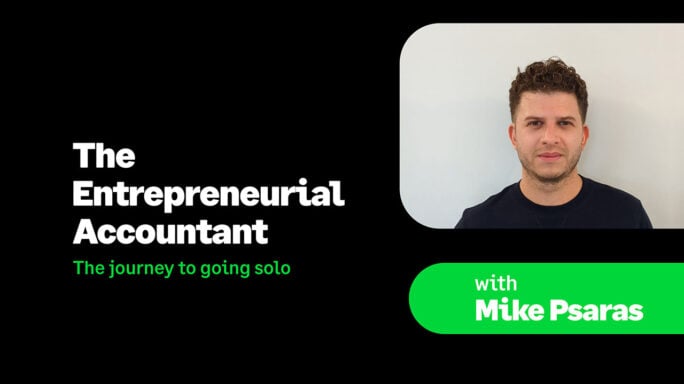
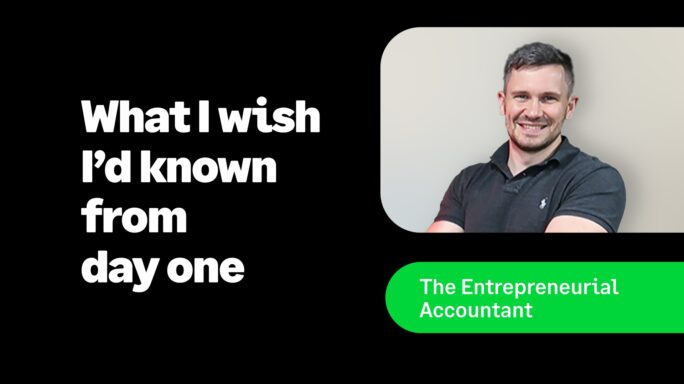




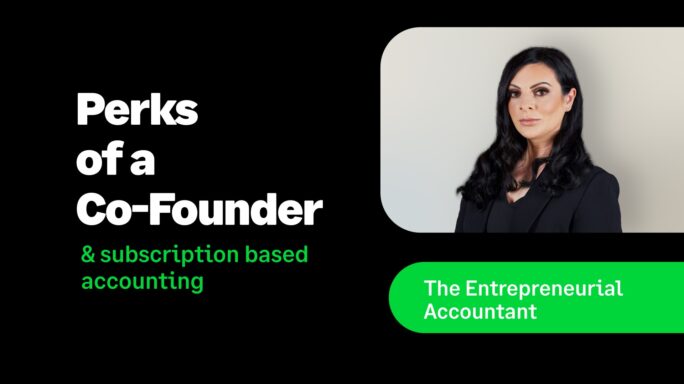

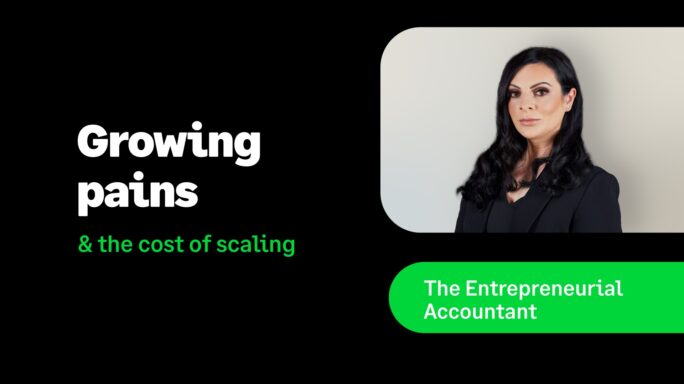
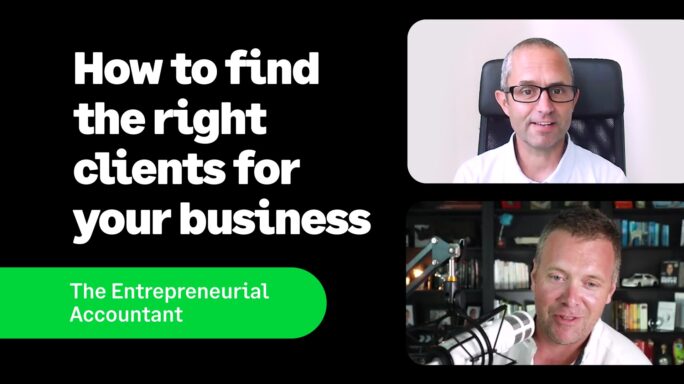
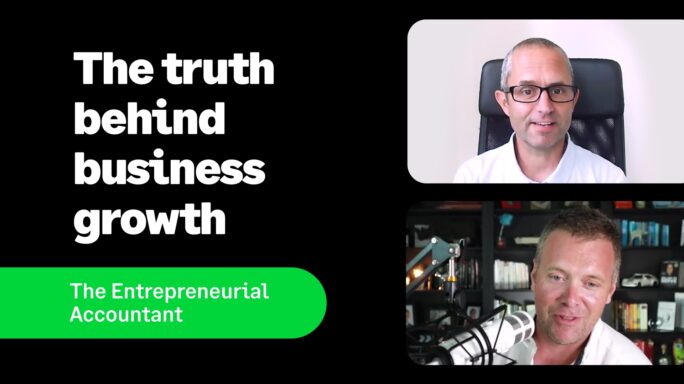


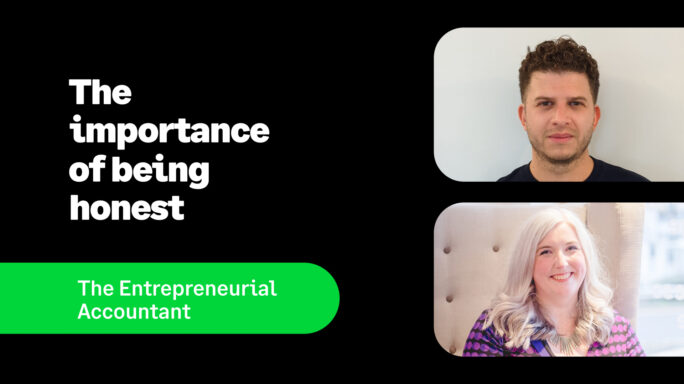


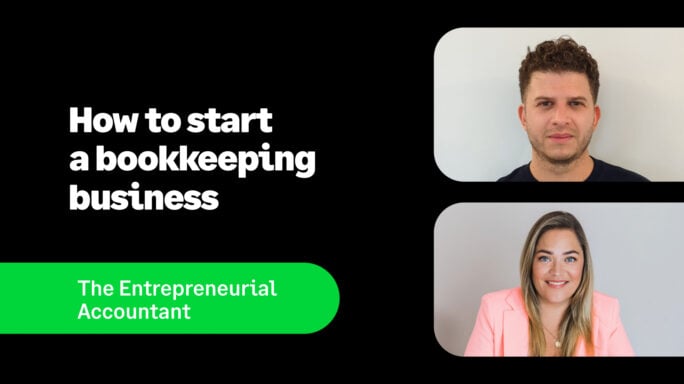








Comment below